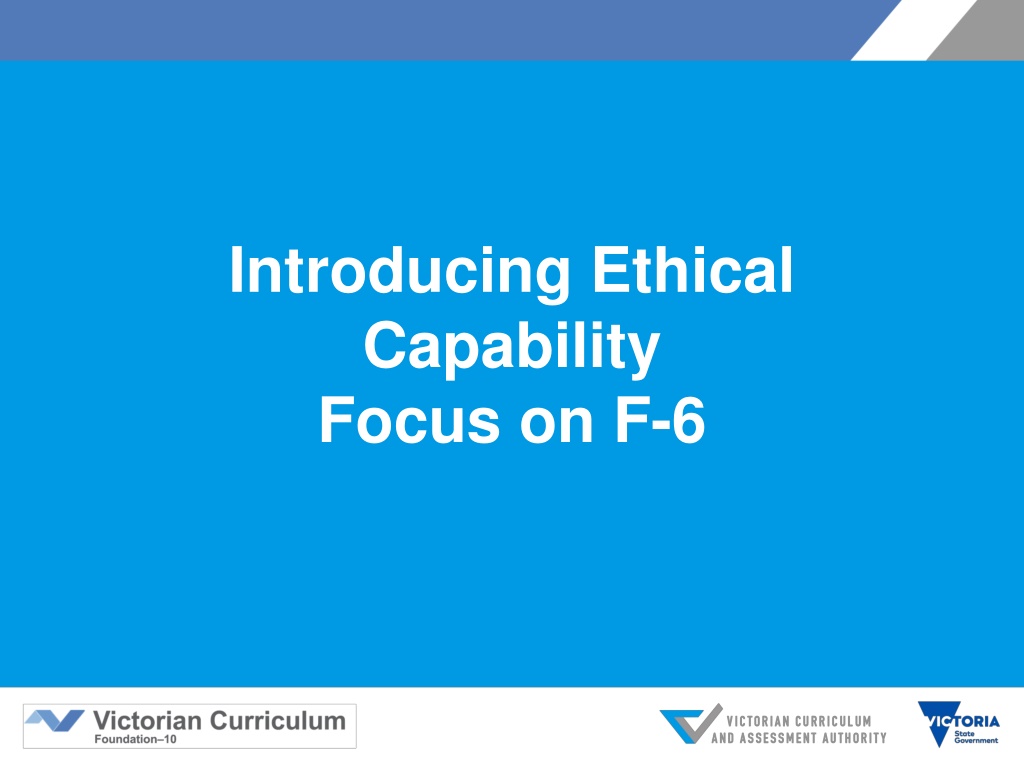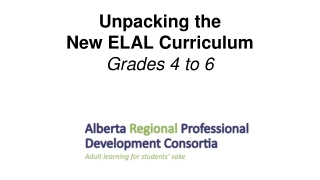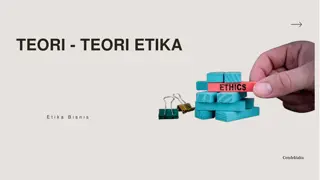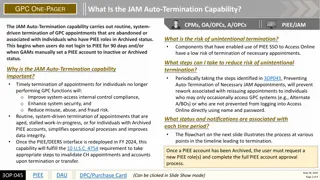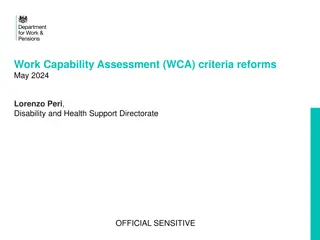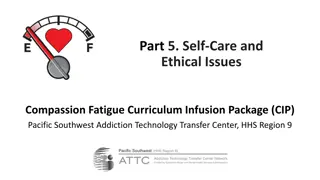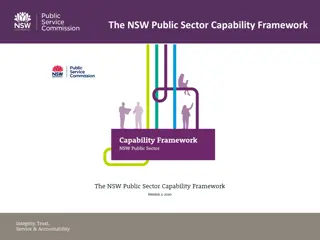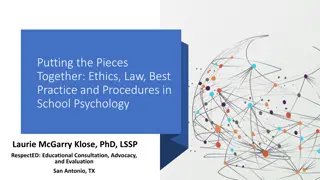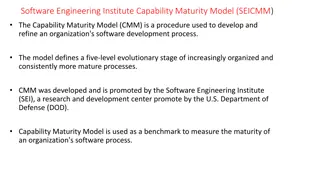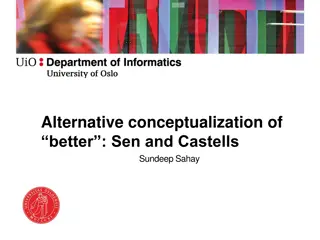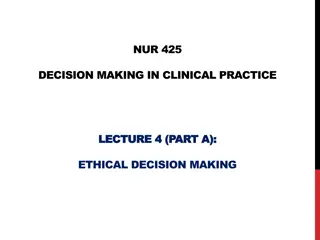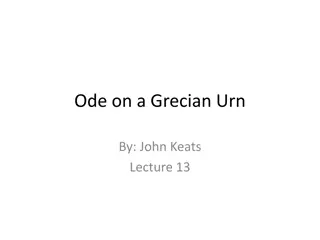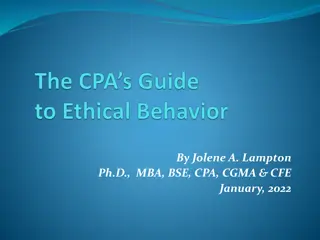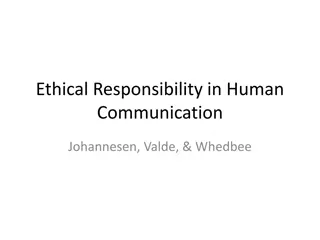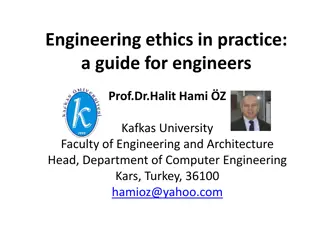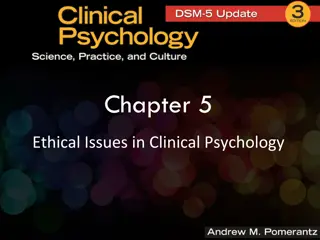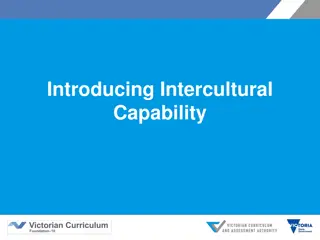Ethical Capability Curriculum Overview
This overview introduces the Ethical Capability curriculum for students from Foundation to Level 10, focusing on developing knowledge, skills, and reasoning to analyze ethical issues and engage in ethical decision-making. The curriculum aims to cultivate open-mindedness, establish ethical principles, and enhance critical thinking. Key messages emphasize explicit teaching of ethical concepts, vocabulary, and connections to Critical and Creative Thinking curriculum. Whole-school planning is crucial for effective implementation.
Download Presentation

Please find below an Image/Link to download the presentation.
The content on the website is provided AS IS for your information and personal use only. It may not be sold, licensed, or shared on other websites without obtaining consent from the author.If you encounter any issues during the download, it is possible that the publisher has removed the file from their server.
You are allowed to download the files provided on this website for personal or commercial use, subject to the condition that they are used lawfully. All files are the property of their respective owners.
The content on the website is provided AS IS for your information and personal use only. It may not be sold, licensed, or shared on other websites without obtaining consent from the author.
E N D
Presentation Transcript
Introducing Ethical Capability Focus on F-6
Objectives an overview of the Ethical Capability curriculum introduction of an ethical issue planning tool
Aims The Ethical Capability curriculum aims to develop knowledge, understandings and skills to enable students to: Analyse and evaluate ethical issues, recognising areas of contestability Identify the bases of ethical principles and ethical reasoning Engage with the challenges of managing ethical decision making and action for individuals and groups Cultivate open-mindedness and reasonableness
Structure Strands - 2 strands Understanding Concepts Decision Making and Actions Achievement standards The first achievement standard at Foundation to Level 2 and then at Levels 4, 6, 8 and 10
Key messages This is a new curriculum The content descriptions covering ethical concepts and decision making need to be explicitly taught and assessed to progress student learning Learn the terminology in the curriculum. It provides teachers and students with the vocabulary to ask questions and describe learning. A glossary can be downloaded from the Ethical Capability Introduction page.
Key messages There is strong connection between the Ethical Capability and Critical and Creative Thinking curriculums. As this is a new curriculum, older students may need to begin their learning at lower levels. This will provide the necessary scaffolding and ultimately support progression of learning Whole-school planning is essential for schools to determine how and when the curriculum is taught
Ethical issues An ability to analyse and evaluate an ethical issue requires knowledge, skills drawn from: - Ethical capability - Critical and creative thinking - Other capabilities and learning areas as appropriate
Example knowledge and skills What do we mean by equal/fair/best? Should we care about inequality? What is the nature of happiness? Treat people as means not ends (Ethical Capability) Is sharing resources equally the fairest and best thing to do to satisfy the needs and wants of present and future generations? What is a resource? How are they combined to produce goods and services? What are needs and wants? (Economics and Business learning area) Is this view on sharing resources well reasoned? (Critical and creative thinking)
The Understanding Concepts strand Students progressively learn to analyse: key concepts and ideas important to identifying ethical problems concepts that have ethical significance such as good, wrong, tolerance, greed, freedom and courage the nature and justifications of ethical principles
Example progression Understanding Concepts strand 5-6 9-10 F-2 Examine the contested meaning of concepts and the extent to which these concepts are and should be valued Investigate the connections and distinctions between and the relative value of concepts Explore the meaning of concepts concerned with the outcomes of acts 3-4 7-8 Explore the contested meaning of concepts and the extent they are and should be valued by different individuals and groups Explore the contested meaning of concepts and how they can seem to differ in different situations
Example progression: Is sharing resources equally the fairest and best thing to do to satisfy needs and wants of present and future generations? Example focus: Is wanting the best thing concerned with achieving a particular goal? What does it mean in this case? Level F-2: Explore the meaningof concepts concerned with the outcomes of acts What are examples of sharing resources that might show what fairness is and is not? How are these examples similar or different to each other and why? How important is: fairness, equality, achieving the best ? How important should it be in this case? Extension: Would views on sharing resources with strangers differ for individuals and charity groups? 3-4: Explore the contested meaning of concepts and how they can seem to differ in different situations 5-6: and the extent to which these concepts are and should be valued Extension: 7-8: by different individuals and groups
Decision-making and action strand Students progressively learn to analyse and evaluate: ways to respond to ethical problems factors that influence ethical decision making and action
Example progression: Decision-making and action strand 5-6 Explore the significance of means versus ends by considering two ways to act when presented with a problem: one that privileges means and one ends F-2 9-10 Discuss issues raised by thinking about consequences and duties, in approaches to decision-making and action, and arguments for and against these approaches Explore the type of acts often considered right and those often considered wrong and the reasons why they are considered so 3-4 7-8 Explore the extent of ethical obligation and the implications for thinking about consequences and duties in decision-making and action Explore how apparently wrong actions can sometimes lead to good outcomes and the reverse
Example progression: Is sharing resources equally the fairest and best thing to do to satisfy needs and wants of present and future generations? Example focus: Level Why is sharing equally often considered the right thing to do? F-2: Explore the type of acts often considered right and those often considered wrong and the reasons why they are considered so What are examples where sharing resources might lead to a bad outcome? Why? 3-4: Explore how apparently wrong actions can sometimes lead to good outcomes and the reverse What would happened if resources were shared equally, as a particular rule, regardless of the consequences? How important is sticking to the rule? 5-6: Explore the significance of means versus ends by considering two ways to act when presented with a problem: one that privileges means and one ends Extension: Do people have a responsibility to share resources? Why? What does this mean for Australia s response to problems such as global hunger? Extension: 7-8:Explore the extent of ethical obligation and the implications for thinking about consequences and duties in decision-making and action
Assessment Different students will be working towards achievement standards at different levels Teaching and learning activities and assessment tasks can be differentiated to suit learning needs, including complexity of issues or contexts
Contact and resources Curriculum Planning, Assessment and Reporting resources http://www.vcaa.vic.edu.au/Pages/foundation10/viccurriculum/curriculumplan ning.aspx Contact Monica Bini VCAA Curriculum Manager, Humanities and Social Sciences Email: bini.monica.m@edumail.vic.gov.au Phone: 9032 1693
